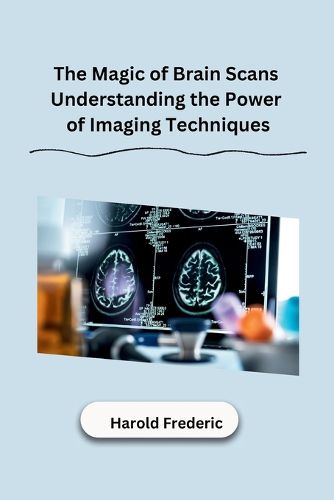The Magic of Brain Scans Understanding the Power of Imaging Techniques
Harold Frederic

The Magic of Brain Scans Understanding the Power of Imaging Techniques
Harold Frederic
This title is printed to order. This book may have been self-published. If so, we cannot guarantee the quality of the content. In the main most books will have gone through the editing process however some may not. We therefore suggest that you be aware of this before ordering this book. If in doubt check either the author or publisher’s details as we are unable to accept any returns unless they are faulty. Please contact us if you have any questions.
Overview of Brain ImagingBrain imaging is a powerful tool that has revolutionized our understanding of the human brain. This subchapter provides a comprehensive overview of brain imaging techniques, shedding light on how they work and the invaluable insights they offer.The human brain is a complex organ responsible for controlling our thoughts, emotions, and behaviors. Understanding its intricate workings has long been a challenge for scientists. However, advancements in brain imaging have opened up new avenues for unraveling the mysteries of the brain.There are several types of brain imaging techniques, each offering a unique perspective on the brain's structure and function. Magnetic Resonance Imaging (MRI) is one of the most commonly used techniques. It uses a powerful magnetic field and radio waves to create detailed images of the brain's anatomy. MRI provides high-resolution images that can help identify abnormalities, such as tumors or lesions, and aid in the diagnosis of various neurological conditions.Another widely used technique is Functional Magnetic Resonance Imaging (fMRI). Unlike MRI, fMRI focuses on brain activity rather than structure. It measures changes in blood flow and oxygenation to infer which regions of the brain are active during specific tasks or stimuli. This technique has been instrumental in mapping brain functions and understanding how different brain regions communicate and work together.Positron Emission Tomography (PET) is another important brain imaging technique. It involves injecting a small amount of a radioactive substance into the bloodstream, which is then detected by a scanner. PET scans provide information about brain metabolism and can be used to study various aspects of brain function, such as glucose consumption or neurotransmitter activity.In addition to these techniques, there are also others like Electroencephalography (EEG), which records electrical activity in the brain, and Magnetoencephalography (MEG), which measures magnetic fields generated by neural activity. These techniques provide valuable insights into the brain's electrical and magnetic signals, aiding in the diagnosis and treatment of conditions like epilepsy and sleep disorders.Brain imaging has revolutionized our understanding of the human brain, enabling scientists to study its structure and function in unprecedented detail. It has helped uncover new insights into neurological disorders, improve treatment strategies, and even enhance our understanding of cognitive processes such as perception, attention, and memory
This item is not currently in-stock. It can be ordered online and is expected to ship in 7-14 days
Our stock data is updated periodically, and availability may change throughout the day for in-demand items. Please call the relevant shop for the most current stock information. Prices are subject to change without notice.
Sign in or become a Readings Member to add this title to a wishlist.


